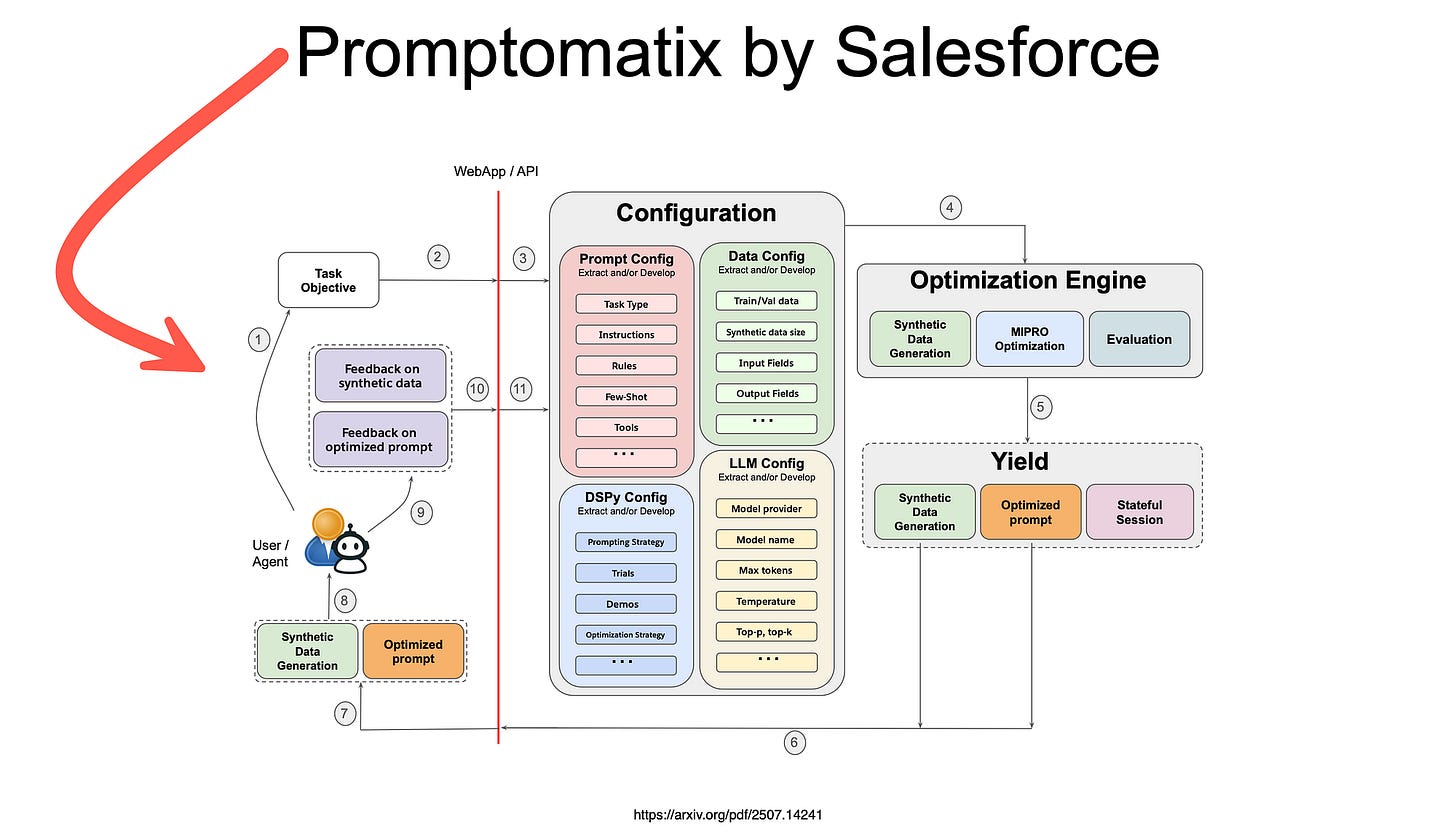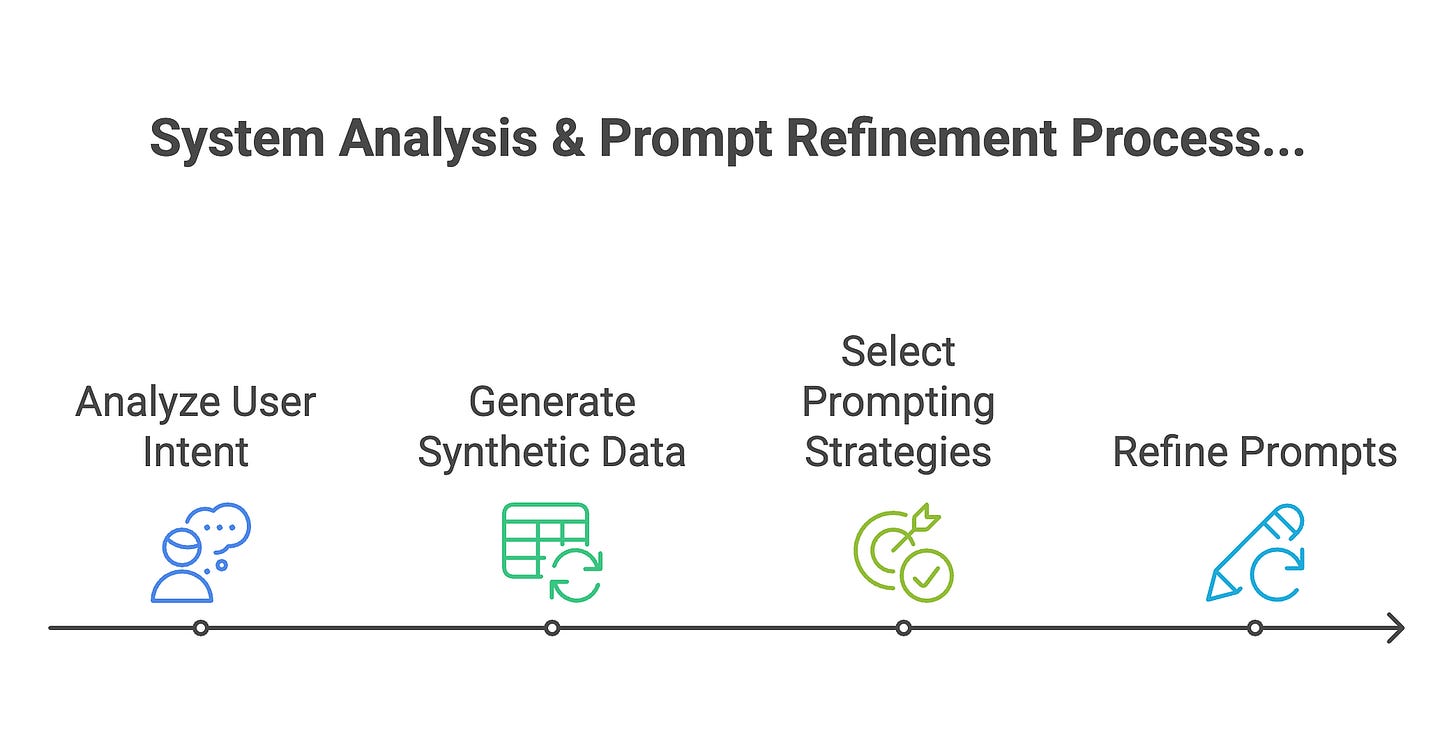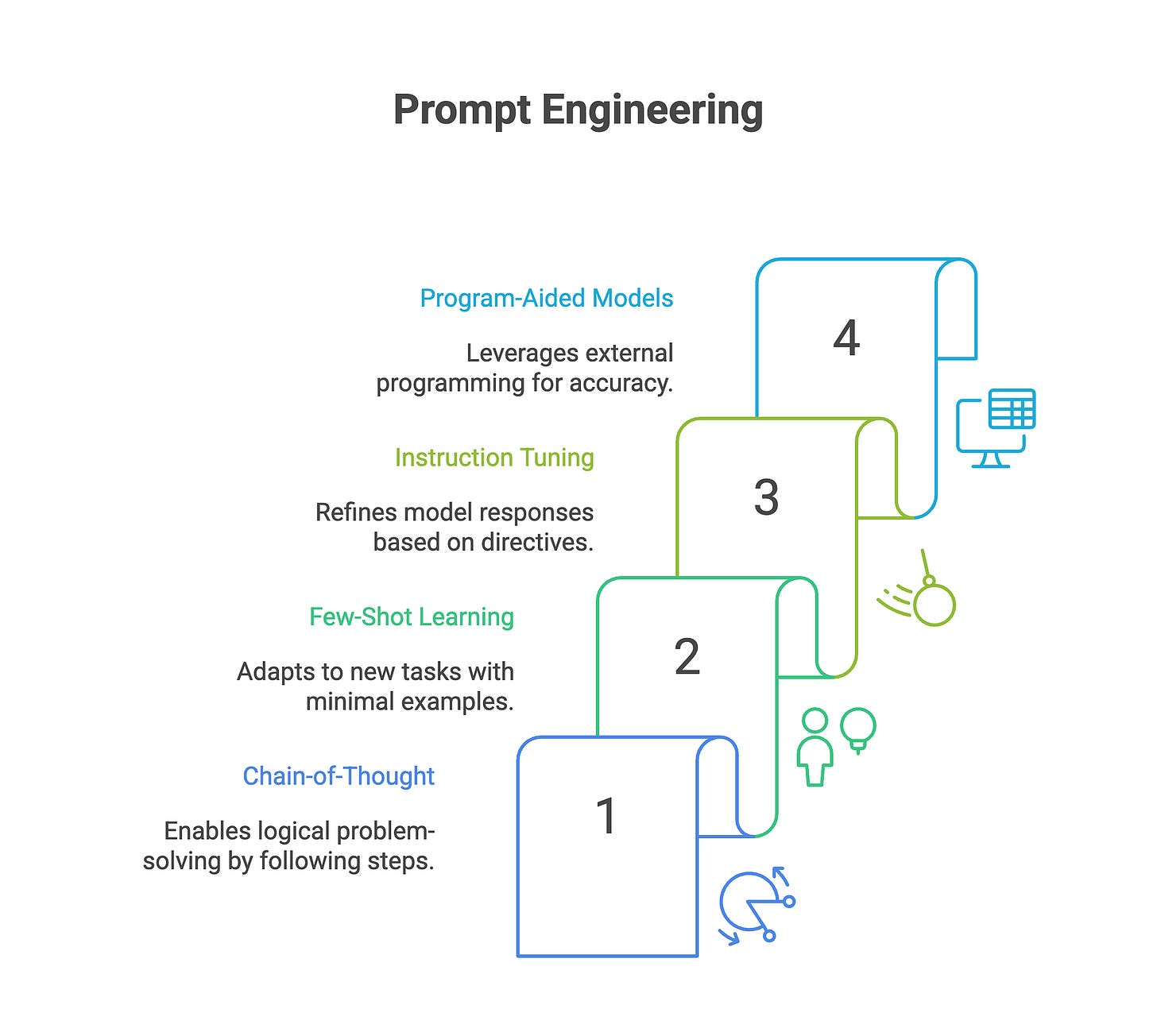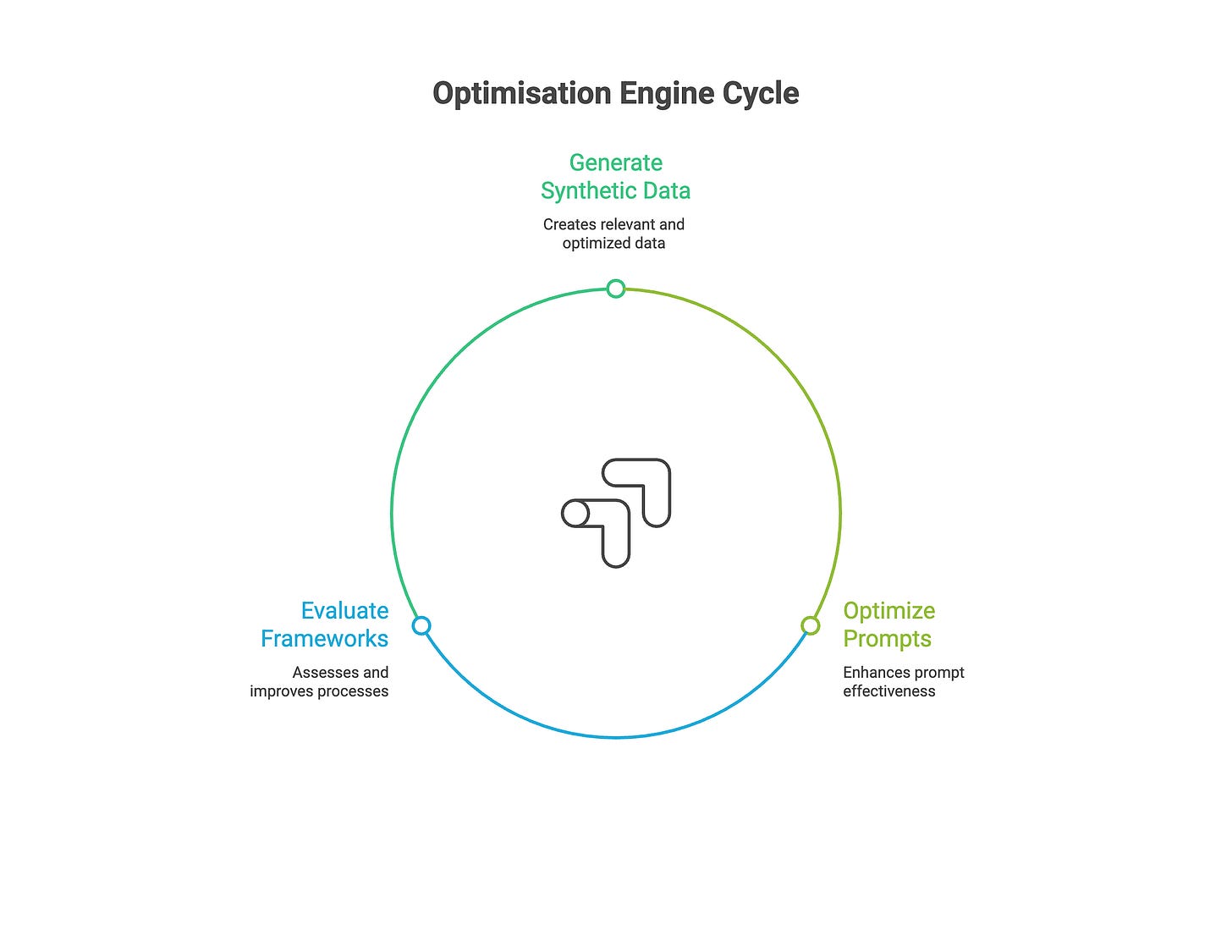Intents Are Back!
There has been a flurry of activity around prompt optimisation, from OpenAI and also now Salesforce…
There is a renewed focus on optimising prompts…as I have mentioned before, OpenAI is focussing on prompt optimisation for deep research inference…
…and also matching use-cases with the most appropriate model.
There has been research in the past that focussed on the idea of an interface where users do not perform prompting, but rather express their intent and expectations and the prompt is written and optimised for them.
Promptomatix
Recent research from Salesforce introduced Promptomatix…which can be described as an automatic prompt optimisation framework that transforms natural language task descriptions into high-quality prompts without requiring manual tuning or domain expertise.
The system analyses:
User intent,
generates synthetic training data, s
elects prompting strategies, and
refines prompts using cost-aware objectives.
Intents
I love the fact that intents remain important….
Intents are really the goal or the purpose of the user, capturing this accurately removes ambiguity and leads to an accurate response.
In the chatbot world of old, NLU models consisted of intents (verbs) and entities (nouns). And intents were really a label for different classifications of pre-defined user queries.
Now in the Generative AI world intents remain important as they evolve from static labels into dynamic, context-aware mechanisms that help Large Language Models (LLMs) to interpret user queries with greater nuance and flexibility.
Rather than relying solely on predefined classifications, generative AI leverages advanced intent detection to infer real-time motivations.
Capturing user intent with the help of Generative AI involves the interpretation and classify the underlying goals behind user queries or conversations, transforming ambiguous inputs into precise, actionable insights.
This process has evolved from traditional chatbot frameworks, where intents were predefined labels for query classification, to dynamic systems powered by large language models (LLMs), which analyse contextual embeddings and more to predict motivations in real-time.
Disambiguation plays a critical role here, addressing linguistic ambiguities.
Prompt Engineering
The field has witnessed the rapid development of sophisticated prompting techniques, including…
Chain-of-Thought reasoning,
Few-shot learning,
Instruction tuning, and
Program-aided language models.
However, scalable prompt engineering remains notably absent, hindering broader accessibility and practical deployment.
Current Limitations
According to Salesforce, current prompt engineering practices face several fundamental challenges that limit their scalability, accessibility and practical deployment.
First, crafting effective prompts demands specialised knowledge of LLM behaviour, advanced prompting techniques (Tree-of-Thought, Program-of-Thought & ReAct) and domain-specific optimisation strategies.
This creates a significant expertise barrier for domain experts lacking technical machine learning knowledge, thereby hindering the democratisation of LLM capabilities across diverse user communities.
Second, LLMs exhibit high sensitivity to prompt variations, resulting in unpredictable outputs that can fluctuate dramatically due to minor changes in wording, formatting, or example selection.
This instability complicates the development of robust, production-ready applications that demand consistent performance across varied inputs and contexts.
Third, inefficient prompts consume excessive computational resources, leading to elevated costs and latency (especially for research tasks) )without commensurate performance gains.
Manual optimisation often overlooks systematic cost-performance trade-offs, resulting in suboptimal resource utilisation in large-scale deployments.
The Goal
The goal of the researchers was to present a zero-configuration framework that automates the full prompt optimisation pipeline — from intent analysis to performance evaluation — using only natural language task descriptions.
They introduce novel techniques for intelligent synthetic data generation that eliminate data bottlenecks in prompt optimisation.
Salesforce propose a cost-aware optimisation objective that balances quality with computational efficiency, enabling user-controlled trade-offs.
Limitations of Current Approaches
The analysis reveals common limitations across existing frameworks:
Manual configuration requirements for technique selection and parameter tuning, creating barriers for users without deep technical expertise in prompt engineering methodologies,
Lack of synthetic data generation capabilities, forcing users to manually collect and curate task-specific training datasets which is time-consuming and resource-intensive.
Limited end-to-end automation, requiring fragmented workflows with substantial manual coordination between different optimisation stages.
Technical complexity barriers for non-expert users, as most tools require programming knowledge and understanding of underlying optimisation algorithms.
Absence of cost-aware optimisation strategies that systematically balance performance improvements with computational efficiency and resource costs.
Lack of unified interfaces across different optimisation backends, creating vendor lock-in and limiting flexibility in choosing appropriate strategies for specific tasks.
Insufficient user feedback integration mechanisms, preventing iterative refinement based on domain-specific requirements and real-world deployment experiences.
Synthetic Data
The Synthetic Data Generation module tackles one of the primary bottlenecks in prompt optimisation by automatically producing high-quality, task-specific training datasets.
It implements a sophisticated multi-stage process, starting with template extraction from sample data, followed by intelligent batch generation that adheres to token limits and promotes diversity.
The generation process leverages advanced prompting techniques to produce examples encompassing various complexity levels, edge cases, and stylistic variations, while preserving consistency with task requirements.
This method overcomes traditional data collection challenges and supports optimisation in specialised domains where training data is limited.
Chief Evangelist @ Kore.ai | I’m passionate about exploring the intersection of AI and language. From Language Models, AI Agents to Agentic Applications, Development Frameworks & Data-Centric Productivity Tools, I share insights and ideas on how these technologies are shaping the future.







Intents never went anywhere. They were always there. The user always has a goal. It's just that most have forgotten about that and think that just throwing data at the problem means they don't have to worry about figuring out what users want and how best to serve them. I'm glad some common sense is working its way back into the situation. It's just a shame that a bunch of wasted time has been spent hitting walls and roadblocks before this was realised.